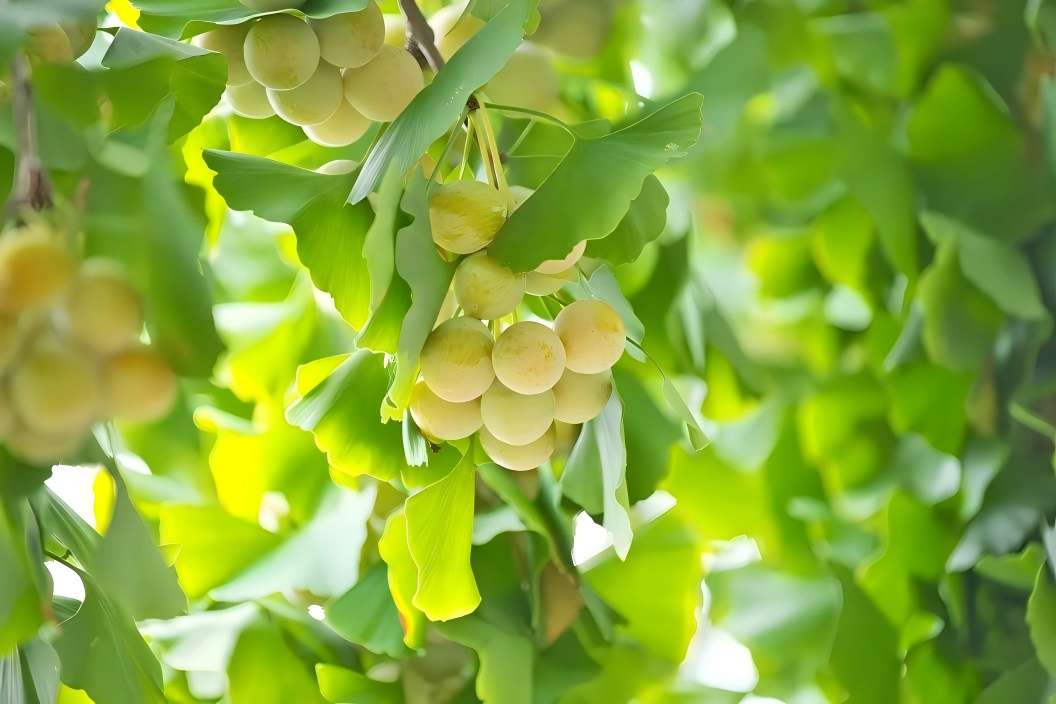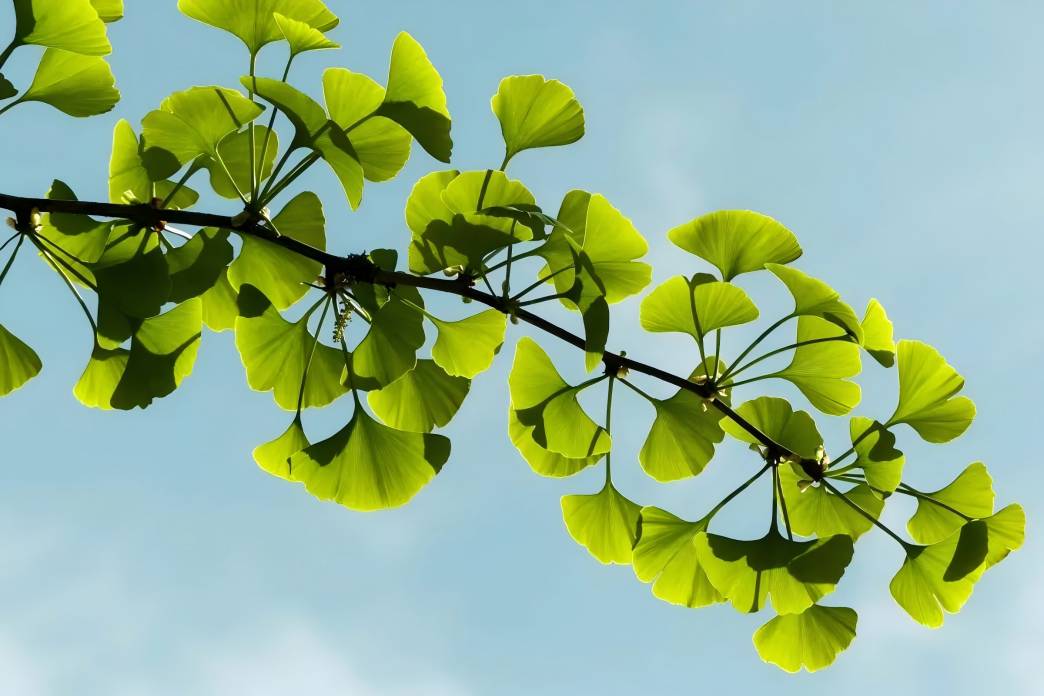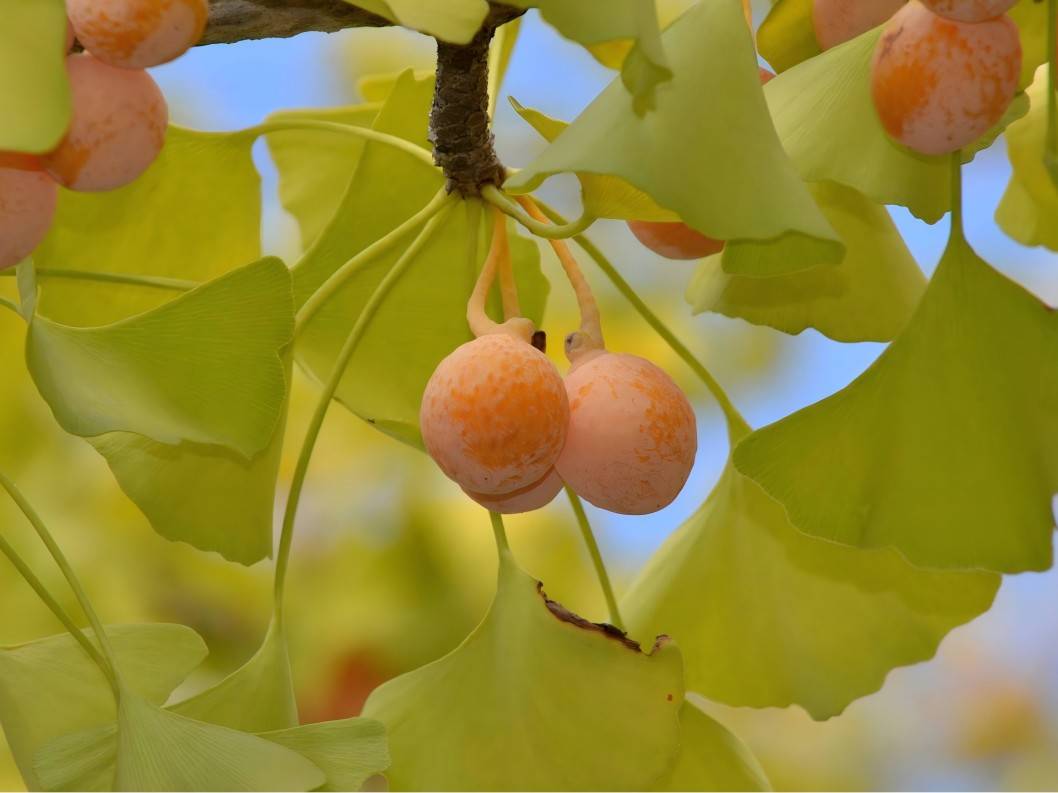What Is the Active Ingredient of Ginkgo Dry Extract?
Ginkgo biloba, a deciduous tree in the family Ginkgoaceae, is known as the “living fossil” and was listed as an endangered species in the IUCN Red List in 2017 [1]. The ginkgo fruit is composed of a fleshy outer seed coat, a bony middle seed coat, a membranous inner seed coat and the seed kernel. In industrial production, the seed kernel is used as a raw material for the development of medicines, health products, beverages, cosmetics, etc., and the outer seed coat is mostly discarded. It has been reported that about 48,000 tons of ginkgo outer seed coats are discarded in China every year, which not only causes serious pollution to the environment, but also results in a large waste of resources [2]. The outer seed coat of ginkgo is sweet and neutral in nature, and has the effect of tonifying qi and nourishing the deficiency. It mainly contains chemical components such as phenolic acids, flavonoids, lactones and polysaccharides [2-4]. It has various pharmacological activities such as anti-tumor, anti-oxidation, anti-aging, anti-inflammatory, anti-allergy and immune enhancement, as well as various biological activities such as antibacterial, insecticidal, preservative and fresh-keeping.
Among the studies on the biological activity of the outer seed coat of ginkgo, the anti-tumor activity research is the most in-depth. Ginkgo dry extract has good anti-tumor activity both in vivo and in vitro. Because the outer seed coat of ginkgo contains a variety of chemical components, it exhibits a multi-component, multi-pathway and multi-target synergistic anti-tumor mechanism of action. However, there are few reviews of the anti-tumor effects and molecular mechanisms of the outer seed coat of ginkgo. A review of the research literature on the outer seed coat of ginkgo biloba over the past 20 years provides a detailed overview of the research progress in the chemical composition, biological activity and utilization of the outer seed coat of ginkgo biloba, and systematically introduces its multi-pathway, multi-target anti-tumor molecular mechanism, with a view to providing research ideas for the development of new anti-tumor drugs based on the outer seed coat of ginkgo biloba, as well as a reference for its comprehensive development and utilization.
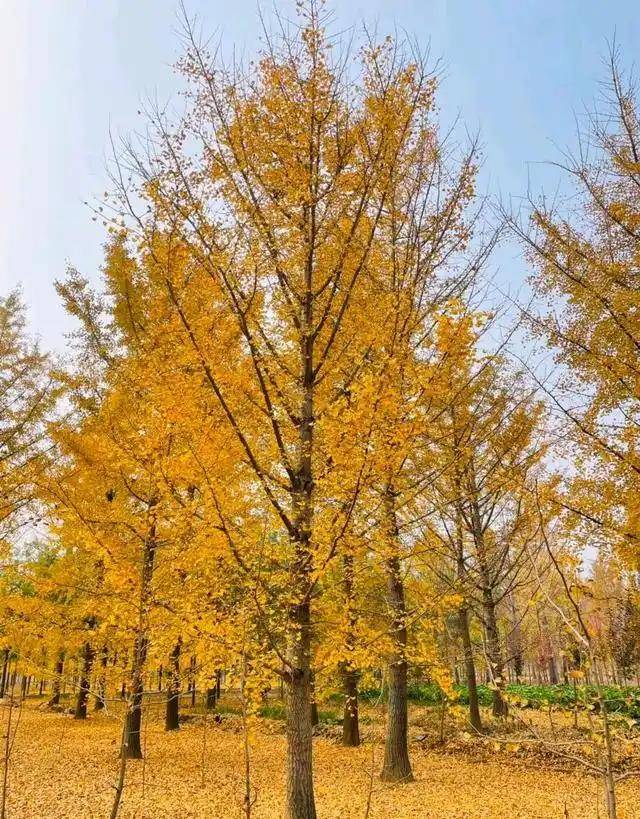
1 Chemical composition of ginkgo dry extract
Ginkgo dry extract mainly contains chemical components such as ginkgolides, ginkgo flavonoids, ginkgolides and ginkgo polysaccharides.
1. 1 Ginkgolides
The ginkgolides in ginkgo dry extract can be divided into ginkgolic acid, ginkgolide, ginkgolic acid, hydrogenated ginkgolic acid, hydrogenated ginkgolic acid, and ginkgolic acid according to their structure. Among them, ginkgolic acid has the highest content [5]. Ginkgolides extracted from the outer seed coat of ginkgo biloba, such as ginkgolic acid, have a content of 4.06% and an extraction rate of 62.9%. They mainly include five types of ginkgolic acid: C13:0, C15:1, C17:2, C15:0 and C17:1. Among them, C15:1 has the highest content, followed by C13:0 and C17:1. These three ginkgolides account for more than 90% of the total ginkgolides [3]. The purity of crude ginkgolides can be increased from 20.07% to 69.18% by using AB-8 macroporous resin for purification [5]. The inhibition of tyrosinase by ethanol extract of ginkgo biloba outer seed coat is stronger than that of ginkgo leaves, which is because the content of phenolic acids in the outer seed coat is higher than that in ginkgo leaves. Some scholars believe that the reason why GBEE can prevent and control pests is precisely because it contains phenolic acid components such as ginkgolic acid, oxidized ginkgolic acid, and ginkgolide [6].
1.2 Ginkgo flavonoids
Research on ginkgo flavonoids began in the 1930s. In 1932, Japanese scholar Shūji Furukawa was the first to extract a mixture of ginkgo bilobalide from ginkgo. In 1941, researchers used countercurrent distribution chromatography to isolate ginkgoflavone, isoginkgoflavone and bilobalide from the ginkgo bilobalide mixture [1]. Subsequently, more and more studies have found that flavonoids are also present in the outer seed coat of ginkgo, and are the main chemical components of its pharmacological activities such as anti-tumor, anti-aging, immunity enhancement, anti-inflammatory, anti-allergic and anti-viral activities. The outer seed coat mainly contains flavonoids, such as ginkgolides, ginkgetin, acetyleginkgetin, isoginkgetin, I-5'-methoxyginkgetin, ginkgolic acid, apigenin, quercetin and kaempferol [7].
At present, the extraction and purification process of the outer seed coat flavonoid components is still immature. The traditional extraction methods mainly include hot water extraction, alcohol extraction, alkaline dilute alcohol extraction and other organic solvent extraction methods. Among them, the extraction effect is better when ethanol is used as the extraction solvent and the reflux extraction method is used, and the extraction rate exceeds 84%, with a standard deviation of 0.0009 [7]. A study compared the purification efficiency of flavonoids from the outer seed coat of ginkgo biloba using liquid-liquid extraction and macroporous adsorption resin. The results showed that the content of flavonoids in the extract obtained using n-hexane and petroleum ether was higher, reaching 25.92%, and the total flavonoid content in the outer seed coat of ginkgo biloba was 30.78 mg·mL-1 [8].
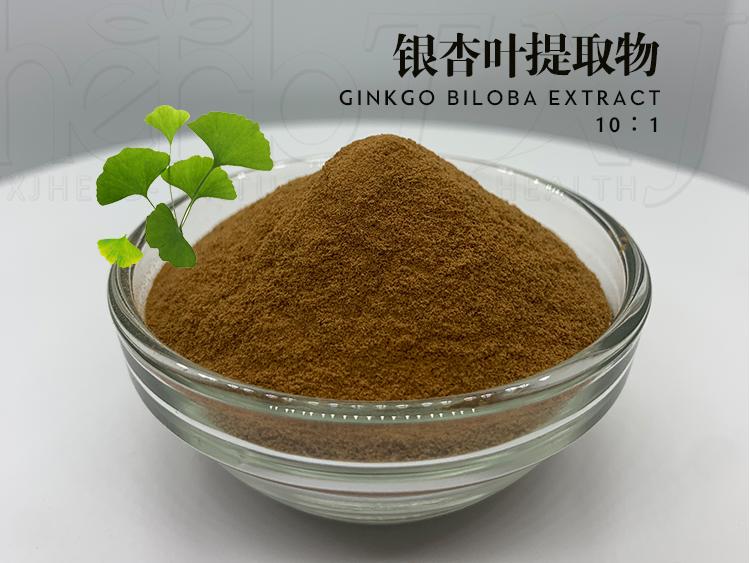
1. 3 Ginkgolides
Ginkgolides are currently mainly extracted from ginkgo leaves and roots, and there have been relatively few reports on ginkgolides in the outer seed coat of ginkgo. A study has for the first time isolated a trace amount of a mixture of ginkgolides A and B and ginkgolide C from an ethanol extract of the outer seed coat. This study revealed that ginkgolides in the outer seed coat are the main active substances that antagonize platelet-activating factor receptors (PAF), with ginkgolide B being the most active [2]. The content of ginkgolides A, B, C and bilobalide in the outer seed coat extract is 4.5%, 2.4%, 1.9% and 3.0% respectively, totalling 11.8% [9]. The content of the lactone components in ginkgo leaves and ginkgo outer seed coats was compared using HPLC. The results showed that the content of lactones in ginkgo outer seed coats was 0.19 mg·g-1, which was lower than that in ginkgo leaves (1.40 mg·g-1) [10].
1.4 Ginkgo outer seed coat polysaccharides
Polysaccharides are one of the main active ingredients in the outer seed coat, and the content of polysaccharides in the outer seed coat of ginkgo is higher than that in the white fruit and ginkgo leaves. Therefore, in-depth research on it is of great significance. Studies have shown that polysaccharides in the outer seed coat of ginkgo have anti-tumor, anti-aging and immune regulation effects, and have a certain inhibitory effect on gastric cancer, lung cancer and cervical cancer cells [2]. Some scholars have studied the optimal conditions for determining the content of ginkgo biloba seed coat polysaccharides using the phenol-sulfuric acid method. The results show that the determination results are better when 1.2 mL of 5% phenol solution, 4 mL of sulfuric acid, the color development temperature is 30 °C, and the color development time is 20 min. The recovery rate of the sample is 99.60%, providing a basis for the optimization of the best measurement conditions for ginkgo biloba seed coat polysaccharides [11]. The experimental measurement of the polysaccharide content in the ginkgo biloba seed coat was 84.6% [12]. The study used the PMP pre-column derivatization HPLC method to analyze and identify six monosaccharides from the hydrolyzed solution of ginkgo biloba seed coat polysaccharides, namely mannose, rhamnose, galacturonic acid, glucose, galactose, and arabinose, with molar ratios of 0.032:0.14:0.296:0.403:0.106:0.046 [13].
1.5 Other components
In addition to ginkgolides, flavonglycosides, ginkgolides and ginkgolic acid, the outer seed coat also contains a certain amount of amino acids, which can be developed as raw materials for health products. It has been measured in the literature that the outer seed coat of ginkgo contains 17 amino acids, with a total content of 3.45% (the ginkgo nut kernel is 9.041%) [11]. The protein composition was analyzed using HPLC and found to be composed mainly of 14 amino acids, including aspartic acid, glutamic acid, serine, glycine, threonine, alanine, proline, and valine [13]. In addition, it was found that the outer seed coat also contains trace elements such as K, Na, Ca, Mg, P, Al and some heavy metal components [14]. Some scholars isolated eight compounds from the outer seed coat of ginkgo, which were identified as ginkgol, β-sitosterol, palmitone-3,6-dione, stigmaster-4-ene-3,6-dione, tricosanoic acid, ginkgolic acid, carotene and sucrose [15]. The literature extracts and isolates the outer seed coat of Ginkgo biloba to obtain genistein, which can lower blood sugar, and verifies it using ultraviolet-visible spectroscopy [16].
2 Biological activity of Ginkgo biloba extract
Numerous studies have found that GBEE has bactericidal and bacteriostatic, insecticidal, antitumor, anti-allergic, and anti-allergy effects, and has a certain effect on immune function, as well as antioxidant and anti-aging effects [9].
2. 1 Pharmacological activity of ginkgo biloba extract
Ginkgo biloba extract has an anti-tumor metastasis effect on mice with Lewis lung cancer metastasis model, and the mechanism of action may be related to increasing the expression of the tumor metastasis suppressor gene nm23-H1, inhibiting the expression of the tumor cell adhesion molecule CD44, and reducing the levels of serum Col IV and HA [17]. In addition, the active ingredient GBEE-2G can inhibit the proliferation of human gastric cancer SGC-7901 cells by regulating the caspase pathway [18]. Ginkgo biloba extract combined with cisplatin has a synergistic inhibitory effect on the S180 transplanted solid tumor, and ginkgo biloba extract also inhibits the in vitro proliferation of H22 cells [19-20]. Using the immersion method in the WHO “snail killer laboratory final screening method”, it was initially explored that GBEE has a very good effect on snail killing, with the advantages of high efficiency and low toxicity [21].
Ginkgo biloba extract at a certain concentration promotes the germination of wheat, corn and soybean seeds and the growth of seedlings [22-24]. Ginkgo biloba extract solutions of different concentrations were used as wood mold and preservative agents. When the extract concentration was 2.0 g·L-1, the inhibition effect on green wood mold was comparable to that of boric acid [25]. GBEE extract diluted 3 times has the best preservation effect on fresh-cut apples. A 10-fold dilution of the extract can slow down the weight loss rate of winter dates to a certain extent and slow down the softening of winter dates [26-27]. An appropriate concentration of ginkgo biloba extract can promote the growth of mulberry branches, increase the yield and quality of mulberry leaves, and the yield and quality of silkworm cocoons fed with ginkgo biloba extract-treated mulberry leaves are also correspondingly improved [28]. Ginkgo biloba leaf and outer seed coat extract contain nematocidal active ingredients, and the insecticidal effect is very obvious [29]. It can be seen that ginkgo biloba extract has important application potential in industrial and agricultural production.
2. 2 Pharmacological activity of the main active ingredients in ginkgo biloba extract
2. 2. 1 Pharmacological activity of phenolic acids
Ginkgo biloba extract contains a large amount of phenolic acids, accounting for about 65% of the extract. It has antibacterial, anthelmintic, insecticidal, anti-inflammatory, anti-allergic, anti-cancer, antioxidant, and immunomodulatory effects, and is of great research value in the field of medicine. However, the adverse reactions of ginkgo acid, such as sensitization, cytotoxicity and embryotoxicity, also limit its use. The ginkgolide components have a strong inhibitory effect on pathogens such as the cabbage black spot fungus and the eggplant damping-off fungus. At a concentration of 70 mg·mL-1, the inhibition rate of spore germination of the above pathogenic fungi is greater than 86% [30]. Ginkgoic acid has a bacteriostatic or fungicidal effect on 25 pathogenic fungi, with an effective inhibition rate of up to 92%. It has a significant advantage over the bacteriostatic activity of ethanol extract (81%) and petroleum ether extract (73%) [31]. In agricultural production, multiple crop diseases often occur at the same time. If ginkgolic acid is used for prevention and control, it can achieve the effect of treating multiple diseases with one drug.
Toxicological experiments have shown that the acute oral LD50 is >4.64 mg·kg-1. It is a low-toxic pesticide that can save on medication costs without affecting the environment. Ginkgolides not only inhibit bacteria, but also have insecticidal properties. The ginkgolides in the outer seed coat have an anti-feeding and toxic effect on the larvae of the diamondback moth. After 6.25 mg·L-1 ginkgolides were separately treated with the larvae of the diamondback moth for 24 and 48 hours, the non-selective anti-feeding rate of the third instar larvae exceeded 77.8% and 94.7%, respectively, and was dose-dependent [32]. On this basis, the insecticidal mechanism of GBEE was further studied, and it was found that it can disrupt the dynamic balance of protective enzymes in the body of diamondback moth larvae, resulting in a decrease in the pupation rate of diamondback moths and a decrease in the quality of the pupa [33]. The reason why GBEE can replace biological pesticides to control some diseases is mainly because it contains ingredients such as ginkgoic acid, hydrogenated ginkgoic acid and ginkgolides. These ingredients also have significant preventive and curative effects on cherry tree aphids, red spiders, and scale insects [34].
The above research provides a basis for the development of new natural pesticides based on ginkgolides. Ginkgolides also have anti-allergic and anti-inflammatory effects, as well as a certain effect on immune function. Ginkgolic acid has an anti-allergic effect similar to that of dexamethasone, and can effectively inhibit passive cutaneous anaphylaxis (PCA) in mice and the release of mast cell granules from the periosteum of rats. It can also directly antagonize the contraction of guinea pig ileal smooth muscle caused by allergic mediators and the contraction of the ileum, and reduce the weight of immune organs in mice and inhibit cellular immune function [31]. The integrity of the carboxyl group in the structure of ginkgolide acid is related to the degree of anti-allergic response. Ginkgetin has a good inhibitory effect on increased capillary permeability, inflammatory exudation and edema in the early stages of inflammation.
2. 2. 2 Pharmacological activity of flavonoids
Flavonoids are substances in ginkgo biloba extracts with a variety of biological activities, including anti-tumor, anti-aging, immunity-enhancing, anti-inflammatory, anti-allergic, and anti-viral pharmacological activities. Ginkgo flavonoids are known as natural antioxidants that can scavenge free radicals, regulate the activity of free radical reaction enzymes, and inhibit free radical reactions. Orthogonal experiments were used to extract total flavonoids from ginkgo seed coats, and it was shown that they have very good antioxidant capacity. The higher the concentration of the total flavonoid extract and the longer the duration of action, the stronger its ability to scavenge free radicals and sodium nitrite. Hints The antioxidant capacity and ability to scavenge sodium nitrite of ginkgo biloba extract are mainly related to the content of flavonoids [34-35]. Clinical studies have also found that 10 to 200 mg·L-1 ginkgo flavonoids relax blood vessels by increasing the release of vasodilatory factors and prostaglandin. When high concentrations of ginkgo flavonoids above 300 mg·L-1 are applied, they mainly promote vasoconstriction by inhibiting endothelium-dependent relaxation [36].
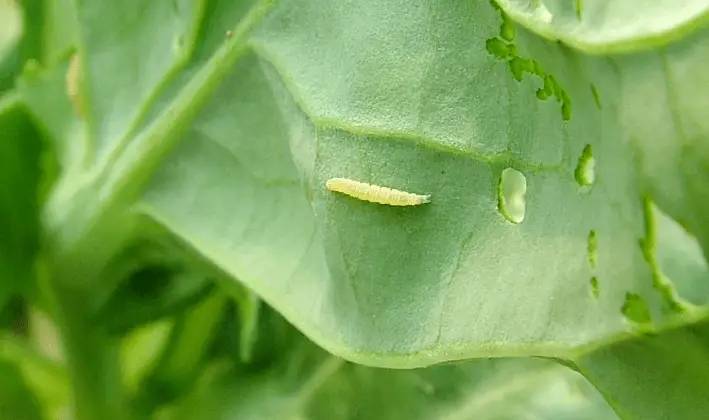
2. 2. 3 Pharmacological activity of lactones
Ginkgolide is a unique component of ginkgo. It is considered to be the most promising natural platelet-activating factor receptor antagonist for clinical application because of its powerful and specific inhibitory effect on platelet-activating factor (PAF) receptors. Ginkgolide has the effects of scavenging free radicals, maintaining the integrity of the blood-brain barrier, reducing vascular permeability, increasing cerebral blood flow, and anti-inflammatory. It also effectively inhibits platelet aggregation, and is therefore used to treat thrombosis and cardiovascular and cerebrovascular diseases [36-37]. It also promotes angiogenesis and neurogenesis, and plays an important role in protecting neurons. Ginkgolide's neuroprotective and restorative effects have a certain therapeutic effect on neurodegenerative diseases such as Alzheimer's disease, multiple sclerosis, and amyotrophic lateral sclerosis. In addition, ginkgolide can also inhibit the growth of tumor cells in a special way to exert an anti-tumor effect, and its specific mechanism needs to be further elucidated.
2. 2. 4 Pharmacological activity of polysaccharides
The fresh and sun-dried ginkgo biloba pericarp polysaccharides have a good inhibitory effect on a variety of solid tumors in animals, as well as human liver cancer, gastric cancer and lung cancer cell lines. The material basis for their antitumor activity is the peptide polysaccharides that are abundant in the ginkgo biloba pericarp. Ginkgo biloba seed coat polysaccharides can inhibit the proliferation of endometrial cancer HEC-1B cells, and the mechanism of action is related to blocking the G1, S and G2 cycles of tumor cells [38].
Other studies have shown that ginkgo biloba seed coat polysaccharides inhibit the growth and proliferation of the cervical cancer cell line Siha, as well as its migration and invasion. It has been demonstrated at the molecular level that these polysaccharides inhibit the migration and invasion of Siha cells by inhibiting the key gene matrix metalloproteinase (MMP-2), thereby exerting an anti-tumor effect [39]. Ginkgo biloba polysaccharides not only provide research ideas for the development of new anti-tumor drugs in humans, but also have a good therapeutic effect on animal diseases. Ginkgo biloba polysaccharides have a good inhibitory effect on highly infectious diseases in poultry, and can inhibit Newcastle disease virus (NDV) infection of chicken embryos, thereby greatly improving the ability of poultry to resist viruses, and providing research ideas for the development of new animal antiviral drugs [40]. In addition, the outer seed coat polysaccharide of ginkgo biloba also has antioxidant pharmacological activity, which can increase the content of superoxide dismutase (SOD) in mouse serum, reduce the content of malondialdehyde (MDA), and improve the exercise capacity of D-galactose-induced aging mice.
3 Molecular mechanism of the anti-tumor effect of ginkgo biloba extract
Ginkgo biloba extract has a wide range of biological activities, among which the anti-tumor activity has been studied most thoroughly. Not only has the in vivo and in vitro anti-tumor activity of ginkgo biloba extract been clarified, but its mechanism of action has also been explored in detail. The anti-tumor mechanism of ginkgo biloba extract has multiple pathways and targets, which can not only induce autophagy and apoptosis in tumor cells, but also inhibit the angiogenesis and metastasis of tumor cells, thus comprehensively exerting its anti-tumor activity.
3. 1 AMPK /mTOR /P70s6 signaling pathway
Tumor cells have weak autophagy capabilities, and inducing autophagy has a significant antitumor effect. The AMPK/mTOR/p70S6k signaling pathway plays an important role in autophagy. When cells are stimulated, the intracellular AMP/ATP ratio increases, and AMPK is activated. Activated AMPK induces autophagy by inhibiting the phosphorylation of mTOR. Inhibiting the expression of p-mTOR can further inhibit the phosphorylation process of its downstream effector protein p70S6k. The p-p70S6k protein can inhibit autophagy by inhibiting its downstream protein Beclin1. Activating AMPK can also directly promote the phosphorylation of Atg5 to promote autophagy. It can be seen that AMPK plays a key role in the regulation of autophagy. In LLC cells, GBEE activates the AMPK signaling pathway, promotes the expression of p-AMPK in the cell, inhibits the key proteins p-mTOR and p-p70S6k in the downstream signaling pathway, and also upregulates the expression of Beclin1 and Atg5, ultimately producing an apoptotic effect [41].
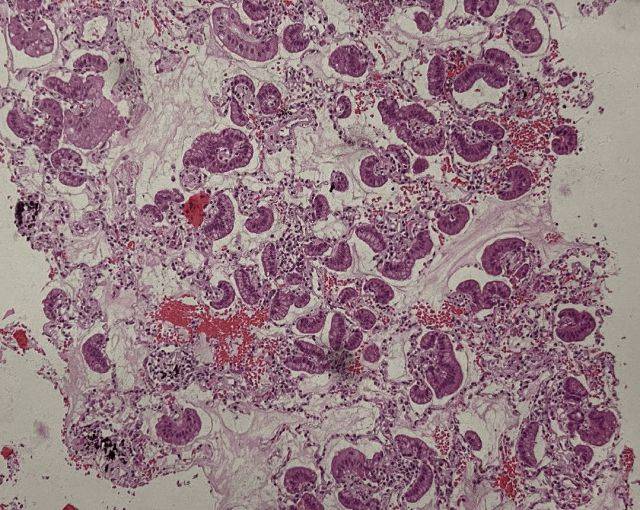
3. 2 MAPK / Caspase signaling pathway
Apoptosis is a suicidal behavior of cells that has a positive regulatory effect on inhibiting tumor cell growth. Apoptosis mainly includes two pathways: the endogenous and exogenous pathways. In the exogenous apoptosis pathway, after the TNF family receptor Fas on the cell membrane surface is stimulated by an exogenous stimulus, the protein network in the cytoplasm transmits to the upstream initiator protein Caspase-8, which in turn activates and upregulates the expression of Caspase-3, thereby causing apoptosis. Ginkgo biloba extract can promote the expression of Fas protein by activating the extrinsic apoptosis pathway, thereby promoting the high expression of Caspase-8 and Caspase-3 through signal cascade amplification, inducing apoptosis of tumor cells. In the endogenous apoptosis pathway, when cells are stimulated by endogenous stimuli, the integrity of the mitochondrial membrane is disrupted, which leads to the release of apoptotic active substances that trigger the apoptosis signal pathway. GBEE can upregulate the ratio of Bax/Bcl-2 proteins throughout the cell, leading to an increase in the content of cytochrome C, and binds to Apaf-1 to activate it, activating Caspase-9, which in turn activates Caspase-3, inducing apoptosis of tumor cells [42]. GBEE can also synergistically induce apoptosis of LLC tumor cells by activating the MAPK signaling pathway and increasing the expression of p-p38 and p-ERK1/2.
3. 3 Wnt/β-catenin-VEGF signaling pathway
The growth and migration of tumor cells are closely related to their angiogenesis. The Wnt/β-catenin signaling pathway is closely related to tumorigenesis, development and metastasis. When the Wnt/β-catenin pathway is activated, β-catenin is released from the binding protein Axin, aggregates in the cytoplasm, then enters the nucleus and binds to TCF/LEF, activating the transcription of target genes VEGF and VEGFR. VEGF binding to VEGFR can promote the phosphorylation and activation of AKT, thereby promoting tumor cell proliferation, migration, and blood vessel formation. Ginkgo biloba extract can inhibit the expression of Wnt3a and β-catenin in LLC cells, reduce the expression of VEGF and VEGFR2 and the phosphorylation of AKT, and ultimately inhibit tumor angiogenesis [43].
3. 4 P13K /AKt /NF-KB /MMP-9 signal pathway
The migration and proliferation of malignant tumor cells are the root causes of poor prognosis and short survival time in cancer patients after chemotherapy. Therefore, controlling tumor cell migration is a key issue in cancer treatment. During tumor cell migration, the PI3K/Akt signaling pathway is activated. Activated Akt activates IkB through phosphorylation of IkB kinase, which in turn causes the IkB/NF-kB complex to disintegrate and release NF-kB; the free NF-kB enters the nucleus to initiate high expression of the MMP-9 gene and the MMP-9 protein. MMP-9 can specifically degrade ECM and BM, thereby enhancing tumor metastasis. GBEE reduces MMP-9 levels by inhibiting the phosphorylation of key proteins in the P13K/Akt/NF-kB signaling pathway, P13K, Akt, and NF-kB, thereby inhibiting ECM and BM degradation and ultimately inhibiting B16-F10 melanoma metastasis [44].
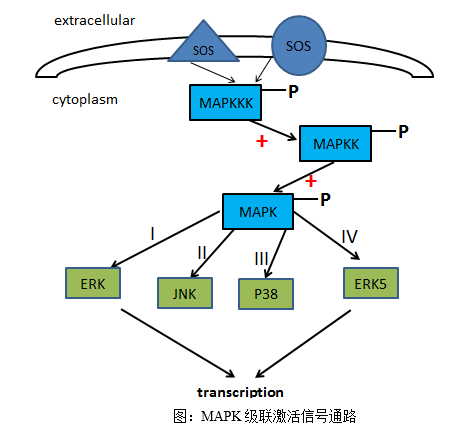
4. Utilization of the resources of Ginkgo biloba outer seed coat
Based on the above research on the various chemical components, biological activities and molecular mechanisms of Ginkgo biloba outer seed coat, research on the utilization of the resources of Ginkgo biloba outer seed coat has been carried out one after another, and preliminary laboratory research on the utilization of the resources of some components has been completed (Table 1).
4.1 Development of antioxidant and anti-aging products
Ginkgolides, polysaccharides, phenolic acids and flavonoids contained in the outer seed coat of ginkgo have strong antioxidant and anti-aging effects. Ginkgo biloba extract can improve the activity of serum SOD in tumor-bearing mice, reduce the formation of MDA and delay the aging of mice. The ginkgolides in the outer seed coat of ginkgo biloba have a good inhibitory effect on hyaluronidase and tyrosinase, and can significantly inhibit cell lipid peroxidation [2, 6, 31]. Therefore, GBEE has the effect of maintaining skin elasticity and whitening when used in daily chemical products, such as the commercially available Ginkgo Biloba Acne Removal Beauty Cream.
4. 2 Development of insecticides and bacteriostats
In folk medicine, the outer seed coat of ginkgo is often mashed and soaked in water. The water extract has a good killing effect on aphids, cabbage worms, etc., and also has a good control effect on diseases such as apple anthracnose and pear scab. Ginkgo biloba extract has a toxic effect on pine wood nematodes, providing a theoretical basis for the search for new plant-derived nematicidal pesticides [29]. In addition, ginkgo biloba extract has a preventive effect on pathogenic fungi such as Trichoderma virens, Fusarium oxysporum, Fusarium graminearum, and Fusarium oxysporum f. sp. cubense, and its antibacterial effect is dose-dependent [45]. In addition to plant pathogens, ginkgo biloba extract also has a strong inhibitory effect on the fish pathogen Myxobolus mucosus and is used in aquaculture to treat fish with rotting gills [45].
Further research has found that the phenolic acid components in the outer seed coat are the main active ingredients for insecticidal and antibacterial purposes [29-33]. Ginkgolide acid has been proven to be a low-toxic pesticide in toxicological experiments, which is in line with current environmental protection concepts and sustainable development strategies. In addition, the original juice in the outer seed coat of ginkgo contains a variety of trace elements essential for plant growth, which have a promoting effect on seed germination and early plant growth. This provides a basis for the development of insecticides, bacteriostats and plant pesticides based on ginkgolide acid.
4. 3 Development of preservatives and mildewcides
Ginkgo biloba extract can adsorb efficiently on metal surfaces, forming a dense protective film that effectively slows the corrosion rate of J55 steel. It has a good inhibitory effect on the corrosion of J55 steel immersed in a 3.5% NaCll solution saturated with CO2. Therefore, GBEE can be used as a corrosion inhibitor for steel in the construction industry to extend the service life of steel [46]. In addition, ginkgo biloba extract is also an ideal natural wood preservative. Substances such as phenolic acids in the outer seed coat can inhibit the growth of Aspergillus versicolor, Phomopsis amygdali, Aspergillus niger, Aspergillus flavus, Phomopsis greenwoodii and Penicillium viridans, preventing wood from becoming moldy [25].
4. 4 Development of emulsifiers and preservatives
Ginkgo biloba pericarp polysaccharides can effectively improve the edible quality of food, stabilize acidic beverages, and be used as an emulsifier. Ginkgo biloba pericarp extract has a preservative effect on fresh-cut apples and winter dates, delaying the increase in weight loss and decay rates and slowing softening. It is more environmentally friendly and safer than chemical preservatives [26-27].

5 Summary and outlook
Although researchers have explored the active ingredients and pharmacological effects of ginkgo biloba extracts, in-depth and systematic studies have not been reported. At present, research on the material basis of ginkgo biloba outer seed coats is still mainly based on chemical composition analysis, and there is a clear lack of isolation and purification research. Only the main active ingredient, ginkgolide acid, has been revealed, but research on the presence of substances such as flavonoids, lactones and alkaloids is still in the exploratory stage. Pharmacological activity research has mainly focused on screening the total extract for various biological activities, such as antibacterial, insecticidal, anti-inflammatory, antioxidant and anti-tumor activities.
Among these, anti-tumor research has been the most extensive, and the anti-tumor mechanism of ginkgo biloba extract has been preliminarily revealed. This involves various mechanisms such as apoptosis, autophagy, metastasis and angiogenesis of tumor cells, but the target of action has not been clearly defined. The anti-tumor active ingredients of the outer seed coat of ginkgo biloba will be the focus of future research on chemical composition. The development of ginkgo biloba products is still in its infancy. Although many studies have shown that ginkgo dry extract has broad-spectrum antibacterial and insecticidal activity, no related products are sold on the market. How to translate laboratory research into marketable products remains to be studied. This paper systematically introduces the chemical composition, biological activity and resource utilization of ginkgo biloba extract, providing a theoretical basis for in-depth research and product development of ginkgo biloba.
References:
[1] Zhang Hongmei. Chemical composition and pharmacological effects of the natural medicine Ginkgo biloba [J]. Journal of Capital Normal University: Natural Science Edition, 2014, 35(3): 41-46, 66.
[2] Tang Yuping, Lou Fengchang, Wang Huan, et al. Chemical composition and pharmacological effects of the outer seed coat of Ginkgo biloba [J]. Advances in Pharmacy, 2000, 22(3): 152-155.
[3] Yang Liucheng, Wu Xiangyang, Chen Jun. Determination of ginkgolic acid in the outer seed coat of Ginkgo biloba by high performance liquid chromatography [J]. Analytical Chemistry, 2002, 30( 8) : 901-905 .
[4] Zhang Heng, Liu Xiaojie, Yao Wenhong, et al. Study on the extraction method of ginkgolide acid from the outer seed coat of ginkgo biloba [J]. Journal of Qingdao Agricultural University: Natural Science Edition, 2012, 29 ( 2) : 147 -151 .
[5] Yang Liucheng, Wu Xiangyang, Chen Jun. Preparation of Ginkgo acid monomer compounds [J]. Chinese Journal of Pharmacy, 2003, 38(12): 15-17.
[6] Han Peng, Qiu Ling, Huang Hao, et al. Comparison of the inhibitory effects of Ginkgo biloba leaf and Ginkgo biloba outer seed coat ethanol extracts on tyrosinase [J]. Journal of Xiamen University: Natural Science Edition, 2005, S1: 116 -119 .
[7] Song Guobin, Xi Guoping. Research on the extraction method of flavonoids from ginkgo biloba pericarp [J]. Chemical and Biological Engineering, 2011, 28( 6) : 72-73 .
[8] Song Guobin, Xi Guoping. Comparative study on the purification of flavonoids from the outer seed coat of ginkgo by liquid-liquid extraction and macroporous adsorption resin. Chemical and Biological Engineering, 2011, 28(10): 70-71.
[9] Zhang Xinhua, Guo Qirong, Wang Guibin, et al. Research progress on the outer seed coat of Ginkgo biloba [J]. Heilongjiang Agricultural Science, 2018, 40(11): 156-160.
[10] Li Ling, Lei Jiaheng, Du Xiaodi, et al. Comparative analysis of the content of bioactive substances in Ginkgo biloba, leaves and outer seed coat [J]. Food Industry, 2018, 39 ( 7) : 229 -231 .
[11] Mao Guanghua, Wu Xiangyang, Yang Liucheng, et al. Determination of the content of ginkgo biloba polysaccharides in the outer seed coat by the phenol-sulfuric acid method [J]. Food Science and Technology, 2008, 34 ( 6 ) : 197 -199, 217 .
[12] Jia Lingchang, Xu Aihua, Song Genping, et al. Comparative study on the composition and pharmacodynamics of two types of ginkgo biloba outer seed coat polysaccharides [J]. Chinese Journal of New Drugs, 2001, 10 (8): 592-594.
[13] Mao L, Chen Y, Hu B, et al. Analysis of the monosaccharide composition of the polysaccharides in the outer seed coat of Ginkgo biloba. Chinese Journal of Traditional Chinese Medicine, 2014, 39( 2) : 262-266 .
[14] Wang Jun, Yin Meng, Han Dongdong, et al. Determination of heavy metal elements and ginkgolic acid in ginkgo dry extract [J]. World Science and Technology - Modernization of Traditional Chinese Medicine, 2016, 18 (1): 65-68.
[15] Wang Guoyan, Zhu Jingjing, Lou Fengchang. Chemical composition of ginkgo biloba outer seed coat and its inhibitory effect on plant fungi [J]. Journal of China Pharmaceutical University, 2014, 45 (2): 170-174.
[16] Chen Jinming, Zhao Liwei, Zhuang Pengyu. Extraction and separation of genistein from the outer seed coat of ginkgo [J]. Journal of Hebei United University: Medical Sciences Edition, 2014, 16 (1): 22-23.
[17] Shen Tingting, Xu Aihua, Zheng Yuanyuan, et al. Inhibitory effect and mechanism of ginkgo biloba extract on Lewis lung cancer metastasis in C57BL/6J mice [J]. Chinese Journal of Pharmacology and Toxicology, 2013, 27(1): 67-71.
[18] Wu Qian, Xu Aihua, Yang Qian, et al. Effect of effective fraction GBEE-2 from Ginkgo biloba extract on apoptosis of gastric cancer SGC-7901 cells and its pathway [J]. New Chinese Medicine and Clinical Pharmacology, 2011, 22(3): 270-273.
[19] Chen Ying, Mao Leilei, Hu Biyuan, et al. The antitumor synergistic and toxicological effects of Ginkgo biloba dry extract combined with cisplatin on S180 tumor-bearing mice [J]. Chinese Journal of New Drugs, 2014, 23(13): 1569-1573.
[20] Cao C, Gu Y, Xu Y, et al. Inhibitory effect of Ginkgo biloba dry extract on mouse hepatoma and its effect on Survivin expression. Traditional Chinese Medicine, 2015, 26(6): 1322-1324.
[21] Wang Jiangjie, Yang Xiaohong, Shen Yuhua, et al. Comparative analysis of the effect of different doses of Ginkgo biloba seed coat crude preparation on killing Oncomelania hupensis [J]. Journal of Chizhou University, 2011, 25 (3): 31-33.
[22] Yu Wanwen, Cao Fuliang. Effect of Ginkgo biloba seed coat juice soaking on wheat germination and seedling growth [J]. Forestry Science and Technology Development, 2011, 25( 5) : 75-77 .
[23] Zhao Dongya, Tang Jingen, Chen Lihong, et al. Effects of Ginkgo biloba dry extract on seed germination and seedling growth of plants [J]. Jiangsu Forestry Science and Technology, 2014, 41 ( 3) : 10 -13 .
[24] Zhang Hongmei. The effect of ginkgo dry extract soaking on seed germination and seedling growth of three plant species [J]. Journal of Capital Normal University: Natural Science Edition, 2014, 35(4): 49-52.
[25] Zhuang Xiaowei, Dong Lingyu, Pan Xin, et al. Study on the inhibitory effect of ginkgo dry extract on wood-decay fungi [J]. Zhejiang Forestry Science and Technology, 2015, 35( 5) : 73 -75 .
[26] Wang Guoxia, Chen Lipei, Han Yu, et al. The effect of ginkgo biloba seed coat and ginkgo biloba leaf extract on the preservation of fresh-cut apples [J]. Northern Gardening, 2017, 39 ( 4) : 120 -123 .
[27] Zhang Jin, Wang Wenting, Wang Guoxia. Study on the effect of ginkgo biloba outer seed coat and ginkgo biloba leaf extract on the preservation of winter jujube [J]. Ningxia Agriculture and Forestry Science and Technology, 2018, 59(7): 55-57.
[28] Zhang Xiaocong, Yu Wanwen, Cai Jinfeng, et al. Effects of ginkgo biloba outer seed coat extract on growth, physiological indicators and cocoon quality of silkworm [J]. Chinese Agricultural Science Bulletin, 2020, 36(10): 47-52.
[29] Qin Dan, Fu Yingkang, Du Zhiwen. Toxic effect of Ginkgo biloba leaf and Ginkgo biloba seed coat extract on pine wood nematode [J]. Anhui Agricultural Science, 2014, 42 (6): 1697-1698, 1775.
[30] Lin Qinghong, Li Jinyu, Chen Fei, et al. A preliminary study on the antibacterial activity of ginkgolide against five vegetable pathogens [J]. Subtropical Plant Science, 2014, 43 (2): 152-155.
[31] Liu Xin, Dang Ya, Geng Jingzhang. Research progress on the pharmacological activity and application of ginkgoic acid. Western China Science and Technology, 2012, 11( 2) : 32-33 .
[32] Guo Chunxia, Fu Daxu, Zhou Tongshui, et al. The feeding deterrent and toxic effects of ginkgolide acid in the outer seed coat of Ginkgo biloba on the larvae of the diamondback moth [J]. Fudan Journal: Natural Science Edition, 2004(2): 255-259, 266.
[33] Tang Jingen, Zhao Dongya, Chen Lihong, et al. Effect of ginkgo biloba seed coat on the growth of diamondback moth and the activity of protective enzymes in vivo [J]. Journal of Fujian Agriculture and Forestry University: Natural Science Edition, 2013, 42(3): 233-236.
[34] Liu Jinjun, Ye Lei, Lu Ying. The effect of ginkgo biloba seed coat extract on the control of cherry tree pests [J]. Shanghai Agricultural Science and Technology, 2010, 38 (5): 121-122.
[35] Zhang Junyao, Yin Li, Yu Haiying. Research on the antioxidant capacity and nitrosative inhibition of ginkgo biloba outer seed coat [J]. Journal of Henan Polytechnic University: Natural Science Edition, 2013, 34(4): 63-65, 69.
[36] Yang Huiping, Gao Rui. Research progress on the medicinal composition and pharmacological effects of ginkgo [J]. Advances in Veterinary Medicine, 2017, 38( 8) : 96-99 .
[37] Zhang Xufan, Hu Jintao, Jia Shoukai, et al. A review of the pharmacology, efficacy, toxicity and safe consumption of ginkgo fruit [J]. Traditional Chinese Medicine Forum, 2020, 35( 1) : 64-67 .
[38] Liu Wei, Xie Xiaolong, Liu Xu, et al. Effect of ginkgo biloba seed coat polysaccharide on the proliferation of human endometrial cancer cells HEC-1B [J]. Chinese Journal of Biochemistry and Pharmacology, 2012, 33(6): 841-843.
[39] Yang Bin, Lou Xiaoming, Wu Chunli, et al. Effect of ginkgo biloba seed coat polysaccharide on proliferation and invasion of human cervical cancer cell line Siha [J]. Practical Drugs and Clinics, 2011, 14(3): 179-181.
[40] Xia Qianxian, Cheng Nan, Jiao Jinying, et al. Preparation of ginkgo biloba seed coat polysaccharide and preliminary study on its anti-newcastle disease virus effect [J]. Heilongjiang Animal Husbandry and Veterinary Medicine, 2017, 41(7): 216-219, 296-297.
[41]CAO CJ,HAN DD,SU Y,et al.Ginkgo biloba exocarp extractsinduces autophagy in Lewis lung cancer cells involving AMPK / mTOR / p70S6k signaling pathway[J].Biomed Phar- macother,2017,93 : 1128 -1135 .
[42]CAO CJ,SU Y,HAN DD,et al.Ginkgo biloba exocarp extracts induces apoptosis in Lewis lung cancer cells involving MAPK signaling pathways[J].J Ethnopharmacol,2017,198 : 379 - 388.
[43]HAN DD,CAO CJ,SU Y,et al.Ginkgo biloba exocarp extracts inhibits angiogenesis and its effects on Wnt / β - catenin - VEGF signaling pathway in Lewis lung cancer[J].J Ethno- pharmacol,2016,192: 406-412 .
[44]CAO CJ,SU Y,SUN J,et al.Anti -tumor effect of Ginkgo biloba exocarp extracts on B16 melanoma bearing mice invol- ving P I3K / Akt / HIF - 1 α/ VEGF signaling pathways[J]. Iran J Pharm Res,2019,18( 2) : 803-811 .
[45]WANG B,WEI PW,WAN S,et al.Ginkgo biloba exocarp extracts inhibit S.aureus and MRSA by disrupting biofilms and affecting gene expression[J].J Ethnopharmacol,2021, 271 : 113895.
[46]SINGH A,LIN YH,EBENSO EE,et al.Gingko biloba fruit extract as an eco-friendly corrosion inhibitor for J55 steel in CO2 saturated 3.5% NaCl solution[J].J Ind Eng Chem, 2015,24: 219-228 .


 English
English French
French Spanish
Spanish Russian
Russian Korean
Korean Japanese
Japanese